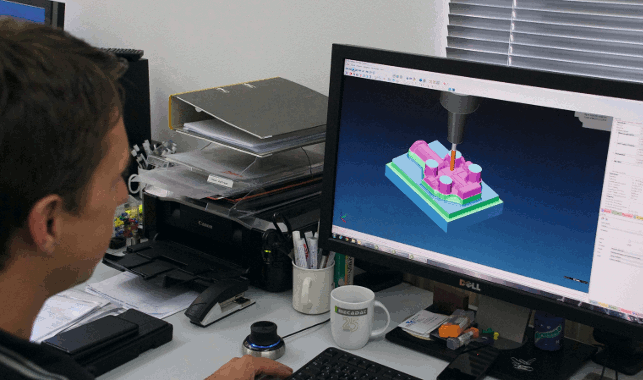Technologie Vertriebs und Beratungs GmbH (TVB) in Upper Bavaria is a toolmaker specialising in graphite electrodes and associated services.
“We produce an average of 12,000 to 15,000 electrodes a year in a variety of sizes for up to 70 customers from the tool and mould making sector,” explains Florian Rauchenberger, TVB’s project manager.

Electrode manufacturer TVB use VISI to help moulds for products that require high finishes – such as these plastic blocks and dinosaurs
TVB has invested in the VISI CAD/CAM solution from Vero Software and uses it from the design phase through to the NC programming and the milling machines.
“We chose VISI because the different modules are focussed specifically on the requirements of the tool and mould making industry. The system uses the same data models in the design as well as NC programming, and has the same self-explanatory operating philosophy across all areas,” says Rauchenberger.
The VISI Machining CAM module is installed on two workstations in the production department to generate the milling programs. “Using VISI Electrode means we simply extract the electrodes from the tooling cavities, the eroding areas are independently detected and the electrode geometries are generated automatically with linear and tangent surface extensions.
“When manufacturing graphite electrodes, VISI provides CAM strategies that have been developed specifically for this application, taking into consideration the special characteristics of milling graphite,” he adds.
Winning contracts
VISI is also used by the team at TVB to help win contracts. For instance, CAD data either from the mould insert or from the completed designed electrode is used to draw up calculations for the tender.
Once the contract has been won, TVB addresses any problem areas such as high ribs or deep pockets, whether the electrodes should be fitted to brackets, and whether partial deliveries are required.
“If the customer doesn’t provide a complete electrode design, we use VISI Modelling to extract the data and position the electrodes in the mould insert,” says Rauchenberger.

After programming, VISI Machining generates a tooling sheet which documents information for the machine operator such as tooling, speeds, feed rates and running times.
The electrodes are measured using a CMM machine once milling is complete and VISI Electrode generates documentation for each individual electrode, which is used by the eroder at a later stage.
According to Rauchenberger, TVB hasn’t found a graphite electrode yet that it can’t manufacture on its E-Jet 550 high speed cutting machines.
Pallets and zero point clamping systems ensure the machines are used to a high capacity, as the spindle running and setup are executed at diff erent times.
“We can interrupt the running process at any time without losing the zero point. While we generally plan on 80 per cent machine capacity there will always be a few emergencies that we need to take into consideration,” says Rauchenberger.
“When a customer tells us they need a specific electrode in just two days, we have to make sure we can adapt our processes and deliver what they need.
“Thanks to the suite of VISI modules we can respond even quicker and more flexibly to special requirements, which benefits our tool and mould making customers who are under considerable pressure to achieve increasingly shorter production times.”
VISI CAD/CAM speeds up bespoke electrode production at Technologie Vertriebs und Beratungs
Default






